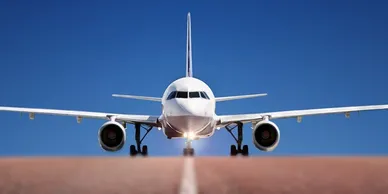

Development Prospect of 737 Max on the way back
(cited by Airline Economics dated 15 May 2019)
57 global regulators were invited to review recent upgrades of Boeing’s 737 Max flight control system on 23 May, 2019 by FAA as an eventually action for removing the grounding and having the international become more comfortable with the enhancements.
Reported in the latest equity research by Jeffries, for a steady free cash flow (FCF) growth, Boeing plans for steady resumption of service of the aircraft with a focus on the supply chain by pointing on production (that likely back to rate of 52 per month instead of 42 at the moment) rather than rate increases. By then, the report says total revenues will increase 22% in 2020 as 737 deliveries exceed production with a commercial revenues increase 39%. There will also be an increase of commercial deliveries from 665 in 2019 to 1,039 in 2020.
The report also went on to say that services have a renewed focus on changing the ecosystem that part of the integrated Boeing service offering includes a power-by-the-hour like offering with the company handling all parts of the service including monitoring and spare parts management and part of the service could grow to include pilot training, which could be a key element to the reconstitution of the 737 Max.
Jeffries found that expected rebound should be in 2020 and improved cash margins by focusing on the services offering could lead to an increase of $33 per share of FCF by 2021, a sustainable level.
FAA Approves First Commercial Drone Delivery Service
(cited by Pia Bergqvist on Flying Magazine dated 25 April 2019)
With a collaboration with Virginia Tech’s Mid-Atlantic Aviation Partnership (MAAP),under the DOT’s Unmanned Aircraft Systems Integration Pilot Program, FAA has provided certification for commercial drone service operations to Wing Aviation, a Google X project which allows the service to start delivering packages via UAS in Blacksburg, Virginia.
The UAS Integration Pilot Program started about two year ago to help with the integration of commercial drone operations. “This is an important step forward for the safe testing and integration of drones into our economy,” said the U.S. Department of Transportation Secretary Elaine L. Chao. “Safety continues to be our number one priority as this technology continues to develop and realize its full potential.”
Wing has been testing its UAS delivery service in Canberra, Australia and in Helsinki, Finland, where customers can order items through an app and have them delivered to their doorsteps by the drones. The delivery status can be tracked on the app. After the delivery is complete, the drone returns to the Wing site. The drones that are currently used weigh about 11 pounds and can only carry up to 3.3 pounds, so you won’t be able to make any major purchases yet. A side from Virginia, testing of the program is also being conducted in northern California.
Qantas commences environmental flight
(cited by Airline Economics dated 15 May 2019)
Qantas has commenced the first commercial flight to produce no landfill waste named QF739, marking the start of Qantas’ plan to cut 100 million single-use plastics by the end of 2020. By use of methods of compost, reuse or recycling, this flight would typically slash 34 kilograms of waste produced with the Sydney to Adelaide route and 150 tonnes of waste annually. Approximately 1,000 single-use plastic items were substituted with sustainable alternatives or removed altogether from the flight.
“In the process of carrying over 50 million people every year, Qantas and Jetstar currently produce an amount of waste equivalent to 80 fully-laden Boeing 747 jumbo jets,” Qantas Domestic CEO Andrew David said.
In its effort to remove 100 million single use plastic items every year by the end of 2020, Qantas and Jetstar will replace 45 million plastic cups, 30 million cutlery sets, 21 million coffee cups and 4 million headrest covers with sustainable alternatives.
